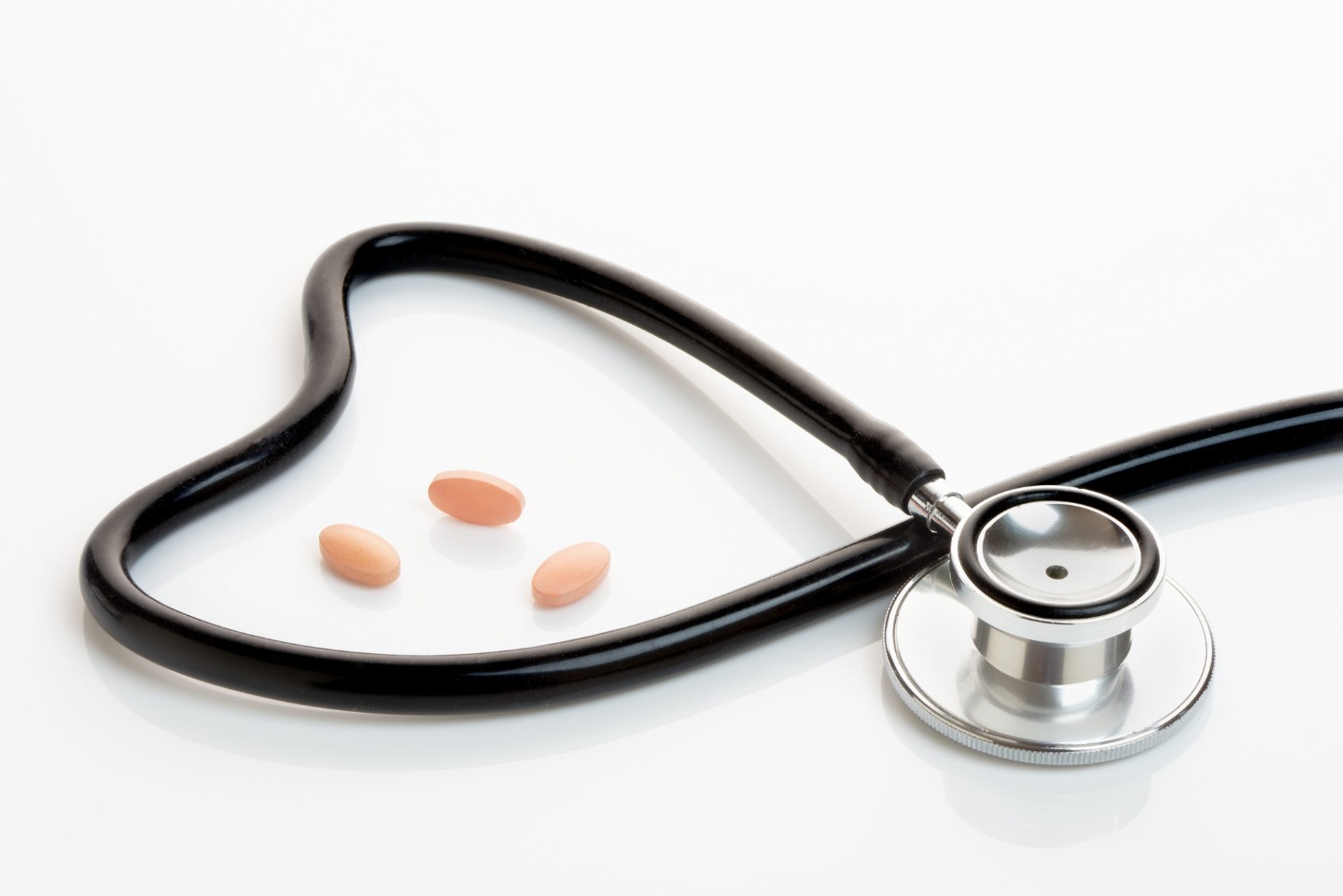There is no class of medications in the history of the world that has been better studied that statins. This class of drugs is more properly termed HMG CoA reductase (3-hydroxy-3-methyl-glutaryl co-enzyme A reductase) inhibitors, but with a name like that a terser nickname is almost mandatory (the name statin comes from the suffix of the members of this class: lovastatin, pravastatin, etc.). Simply speaking, this chemical blocks the metabolic pathway that produces cholesterol, which, of course, is known* to be a chief culprit in the formation of arterial blockages and is a direct risk factor for heart attacks and stroke. Following are statins currently available in the U.S.:
- Lovastatin (Mevacor)
- Pravastatin (Pravachol)
- Simvastatin (Zocor)
- Atorvastatin (Lipitor)
- Rosuvastatin (Crestor)
Since the development of the first widely used statin in 1976 (lovastatin, originally isolated from penicillin fungus) thousands of patients have participated in major research studies assessing the safety and effectiveness of this class of medications and more than 3 billion prescriptions have been filled in the U.S. alone.
The theoretical benefit of widespread statin use has translated into a real effect among the current population of patients at risk for heart disease and stroke. At present, the prevalence of coronary heart disease is at its lowest in decades, despite an ongoing epidemic of tobacco abuse and obesity. Many experts in the field of epidemiology feel this is a direct result of the generalized application of the knowledge that has come from these many research studies. I personally agree that the extensive use of lipid-lowering drugs has actually cut into my cardiology business, and I’m quite pleased with that.
You would think that all this information and scientific certainty would settle any potential controversy surrounding the safety of the statins. You might imagine that doctors and patients alike would feel comfortable using a class of medications for which there is study after study demonstrating the benefit of this type of cholesterol blockade.
Not so.
Virtually every patient who has ever gone on a statin medication has heard stories from family, friends, neighbors, and acquaintances about the dangers this class of drugs harbors: muscle and joint pain, weakness, paralysis, memory loss, depression, cancer, chronic pain, liver and kidney failure. If you go on the internet and type “truth about statins” into virtually any search engine you will come up with thousands of sites that provide you with nearly everything except the truth. I tried this last week and was astounded at the misinformation that is heaped upon anyone trying to come to an unbiased opinion on the matter (I also found that for most of these sites the damaging assertions about statins serve as nothing more than a gateway to advertise some other product).
Before I proffer my opinion on the matter, let’s detour for a moment to review the hierarchy of patient-based research. Medical studies come in a myriad of different designs and span the gamut of quality and reliability. At one end of the spectrum are anecdotal reports (“As a doctor I observed that Mr. X had adverse reaction to the drug Y”) that are unquestionably the least reliable of all scientific methods in that they involve only few patients, often only one doctor, and are fraught with heavy personal bias.
At the opposite end sits the gold standard research protocol: the prospective, randomized, controlled, double-blinded study. Definitions:
Prospective: All data are collected after the study is designed. The opposite of this is the retrospective study which collects data about events that have already happened.
Randomized: Each patient to enter the study is randomly assigned to one of two (sometimes more) therapies. This differs from some studies where the clinician picks the therapy the patient will receive.
Controlled: More than one therapy is represented in the study. Generally you compare the treatment in question (such as a new drug) to another treatment that is either placebo (sugar pills that reportedly have no true effect) or the established standard of care (therapy that patients are already receiving).
Double-blinded: A radiologist once told me this means to two orthopedists trying to read a chest x-ray. It actually refers to a deliberate concealment from both the patient and the doctor/nurse/study coordinator so that neither entity can know whether the patient is receiving the therapy being tested or the control. With many medications this is relatively easy to do. With other therapies, such as surgeries, it’s very difficult.
The point of each of these provisions is to remove the effect of bias—on the part of the patient, the doctor, and the study designers—to the greatest degree possible. Unfortunately this type of study is also the most difficult to run and extremely expensive, but it yields the most reliable information we can obtain. A researcher who could successfully run such a study with a few hundred participants would be guaranteed a publication in a highly reputable medical journal.
How many patients have been enrolled in statin studies? At this point over 120,000 patients have participated in prospective, randomized, controlled, double-blinded trials specifically looking at the statin class of medications. And in every one of these studies the side effects of both the statin and the placebo have been documented with the precision of a Swiss watchmaker with obsessive-compulsive disorder. Every ache and pain, each rise and fall of dozens of lab markers, and all doctor and hospital visits are painstakingly recorded, tracked, and dissected using a mind numbing array of statistical analyses.
Modern medical science has never (and may never again) so thoroughly dissected the effect—and possible adverse effects—of a class of medication as has been the case with statins. Here’s what the research teaches us:
- If you’ve had a heart attack already, or have coronary artery disease, you are at relatively high risk for heart attack, stroke and death. Those with diabetes or atherosclerosis elsewhere in their circulation (carotid or peripheral) are at similarly high risk. This group of patients has at least a 20% risk of death or severe cardiac problem over the course of 10 years. A general rule holds true about risk and therapy: the higher your risk, the greater the magnitude of benefit you get from a therapy.
- If you average all the studies you will find that you can reduce the risk of cardiac-related death by about 20% among individuals at higher risk.
- Statins reduce the risk of stroke by about 20-30%.
- Statins are known to raise liver enzymes in a dose-dependent fashion in around 5 percent of people
- Statins very rarely lead to dangerous muscle damage (myopathy).
- Side effects were reported only slightly more commonly in patients randomized to receive the statin drugs (when compared to those on placebo), but the rate of drug discontinuance was similar between both groups.
This last finding is critical. It means that regardless what you may hear from neighbors and family about the dangerous side effects of statins, the truth of the matter is that among the 120,000 patients studied the side effects of the statins were no different than those of the placebo pill. Sure, muscle aches occurred, but they were no more prominent among patients randomized to receive the statin.
At least one caveat exists to all this research, however. There is one form of prominent bias that cannot be excluded from prospective studies such as these, and is in fact inherent in the design of the trial. This bias occurs when the investigator decides what type of patient should be enrolled in the research and who should be excluded. A good example is the mammoth Heart Protection Study (HPS), a research endeavor that randomized over 20,000 patients to statin versus placebo. The enrollment criteria required patients to have some form of vascular disease present (coronary, cerebral or peripheral vascular disease) and therefore excluded patients with no established history of atherosclerosis. Since healthy individuals weren’t enrolled it stands to reason that the findings of the HPS cannot be applied to the general population.
Also excluded were patients with certain medical problems. Since muscle aches and liver enzyme abnormalities are a known possible side effect of statins, HPS kept patients with preexisting muscle and liver ailments from enrollment in order to limit the confusion.
Research coordinators are free to exclude these individuals from receiving statin therapy but we clinicians aren’t. Patients with liver and muscle problems come in with heart attacks as often as anyone else does and we are left trying to decide how safe and advisable it is to start these people on statins. It’s not known whether people with other complicated medical problems (or complex drug regimens) are at higher risk for statin side effects.
Now, having bored you with my lengthy sermon on the scientific literature supporting statin safety and tolerability, let’s look at real world experience. Most every physician you talk to will tell you that the rate of statin intolerability among their patients is higher than 5%, I, too, have seen a higher than expected proportion of patients come back to my office complaining of muscle aches and fatigue after initiating this cholesterol therapy.
What to make of this? I don’t really know. I have to believe that statins in the general population result in side effects at a rate not seen in the study groups. For me to deny this would be ignoring my personal experience with patients whose symptoms improve once they stop the medication and recur if it is restarted.
That said, I also believe that the specter of statin toxicity has so suffused the general population that it has affected the way patients and doctors react such possible side effects arise. When a person who is not on a statin has joint or muscle aches or fatigue, those complaints are attributed to nothing more than old age, obesity, arthritis, or what have you. But, these days, when a patient on a statin reports the same symptoms, the statin becomes the culprit and is quickly discontinued. An example: I saw a patient this week who complained to his pharmacist of muscle aches associated with a cold and was told to stop his Crestor because “it might be killing him.” Thankfully, the patient—an elderly gentleman at great risk of repeat heart attack—was open to hearing a second opinion.
In summary, if you are unfortunate enough to have had a heart attack, stroke, vascular disease, or diabetes, you are at immense risk of suffering some vascular complication down the road. Pharmaceutical research has provided us an enormously potent tool to cut the risk of heart attack, stroke and death in such individuals, and more than a hundred-thousand patients donated their bodies to help prove the safety of this therapy. Each of you has to make your own choice about every medication you introduce into your body, but I would encourage you to put a little faith in the best science that modern medicine has to offer and submit to letting your doctor help you control your cholesterol.
* Remarkably, there are numerous so-called experts who call into question the linkage between cholesterol and heart disease and their websites can be easily found. The research that implicates cholesterol in vascular disease—starting with the seminal Framingham Heart Study in the 1950s—is about as ironclad as any concept we have in modern medicine. Those who can’t get on board with the lipid hypothesis would likely have been the same ones to reject the earth-is-round theory.





